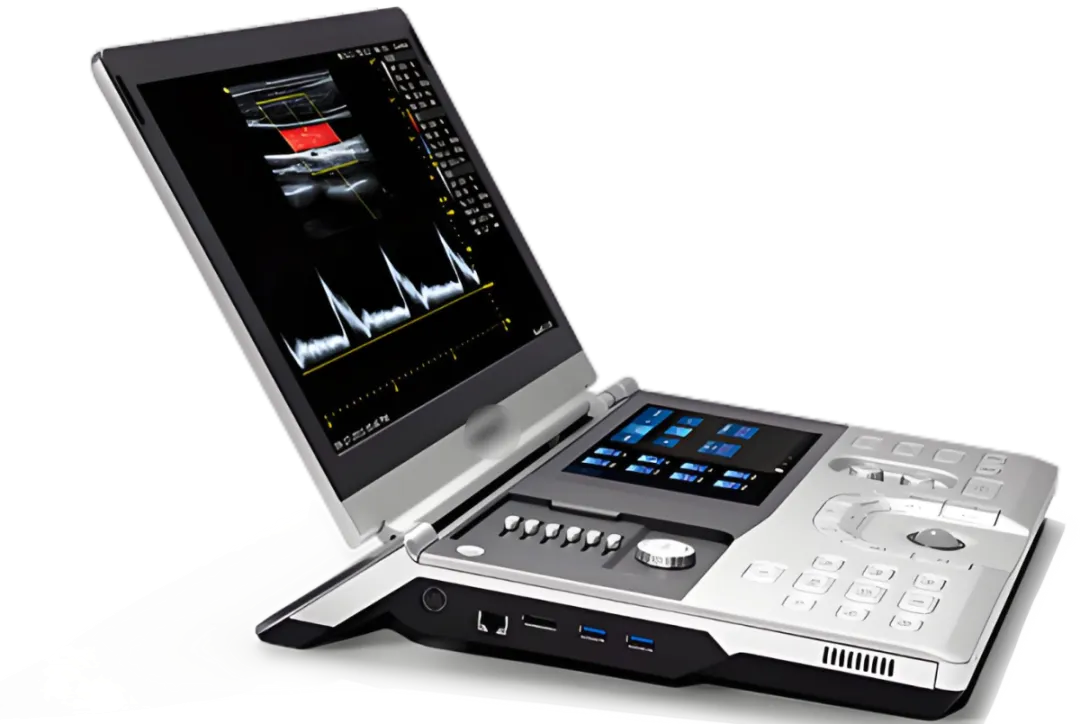The rapid development of medical science has led to the widespread use of ultrasound equipment. Portable bedside ultrasound diagnostic devices not only meet the clinical medical needs for visualization, portability, and intelligence but also satisfy the needs of primary-level patients for quick screening anytime and anywhere.
Portable bedside ultrasound diagnostic devices are flexible and convenient to move, powerful in function, and have high imaging quality. The entire machine is the size of a notebook and supports an AI artificial intelligence auxiliary diagnostic system that can automatically mark the range and location of lesion characteristics. It is equipped with an imaging cloud platform system that supports intelligent functions such as image management, remote consultation, remote teaching, and cloud storage.

Portable bedside ultrasound diagnostic devices usually need to process various complex medical image data, requiring efficient and fast image processing and display capabilities. The latest IMX8M Plus SMARC core board launched by Qiyang integrates a 2D/3D GPU graphics accelerator, has excellent image processing performance, and has a wealth of interface resources. It is designed according to the SMARC2.1 industry standard and is suitable for medical application scenarios with low power consumption, low cost, and high performance.
The SMARC-IMX8MP-CM core board is based on the NXP IMX8M Plus high-performance processor, with four-core Cortex-A53 and single-core Cortex-M7, a clock speed of up to 1.6GHz, and an integrated 2.3TOPS NPU, providing sufficient computing power to process complex ultrasound image data, support automatic analysis, and intelligent auxiliary diagnosis, effectively improving the accuracy and efficiency of diagnosis.
(12) (3).jpg)
The IMX8M Plus SMARC core board integrates a 2D/3D GPU graphics accelerator, supporting the rapid processing of a large amount of image data; it supports 1080p60, h.265/4 video encoding and decoding, meeting the requirements for high-definition video display, reducing the delay in data processing and transmission, providing more timely data feedback, and clearer, more delicate image details, supporting doctors in making accurate and reliable diagnoses.
The board has a wealth of interfaces on board, including Gigabit Ethernet, USB, CAN, and other interfaces, to meet the functional development of medical equipment and the access of various peripherals; it supports WiFi, 4G/5G wireless communication, to achieve data transmission and sharing, remote diagnostic collaboration, and improve the convenience of medical diagnosis.
Portable bedside ultrasound diagnostic devices rely on built-in batteries for power supply, and low power consumption is a key element in maintaining long-term use of the equipment. The processor uses a 14nm FinFET process, which improves performance while optimizing energy consumption; the SMARC module has an excellent low-power design, giving it an advantage in terms of energy consumption.
The core board uses industrial-grade electronic components, has passed electromagnetic compatibility tests, electrostatic discharge, drop and vibration tests, providing good anti-interference performance, and enhancing the reliability and safety of medical equipment.
In addition to the IMX8M Plus SMARC core board for the hardware part of the portable bedside ultrasound diagnostic device, the RK3568 SMARC core board can also be selected according to specific application needs. There is no need to replace the Qiyang SMARC-MB standard baseboard; you can directly replace the core board to quickly design and deploy the system, save development time and cost, and flexibly achieve rapid upgrades of equipment applications.
(12) (3).jpg)



